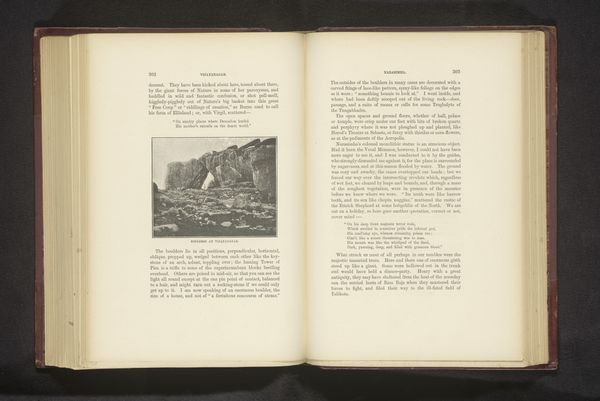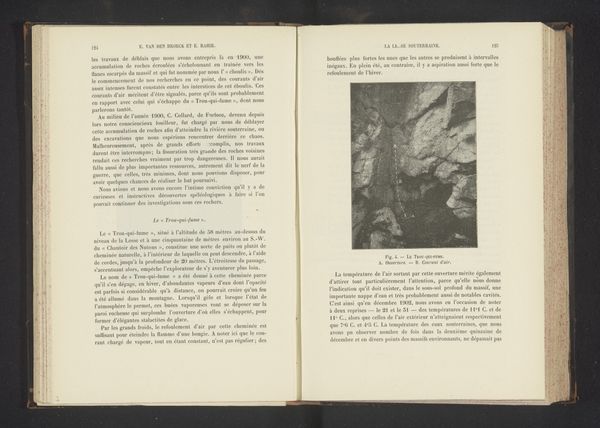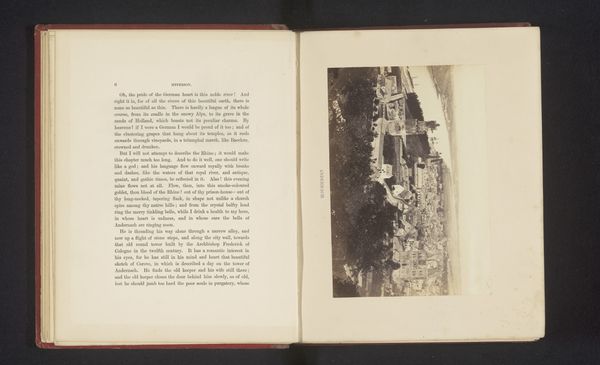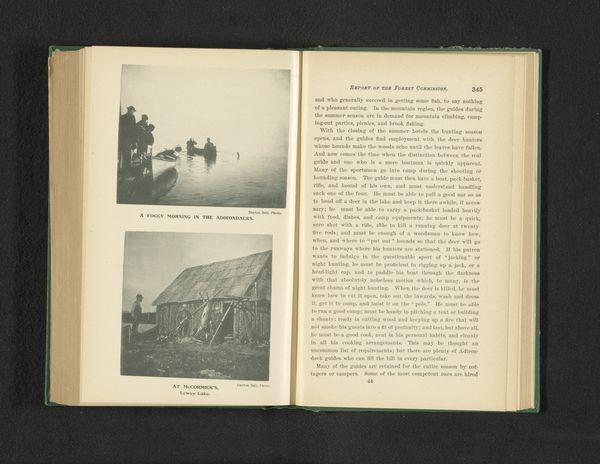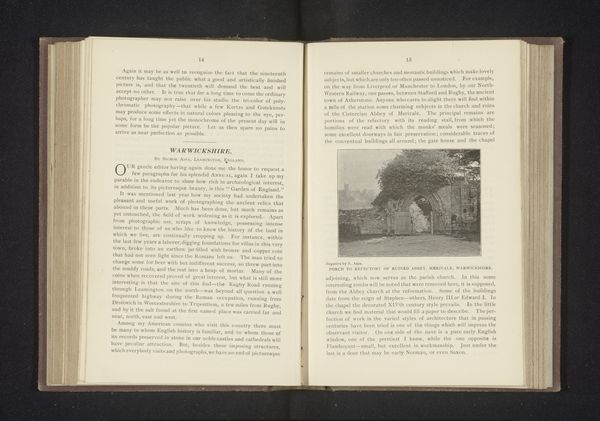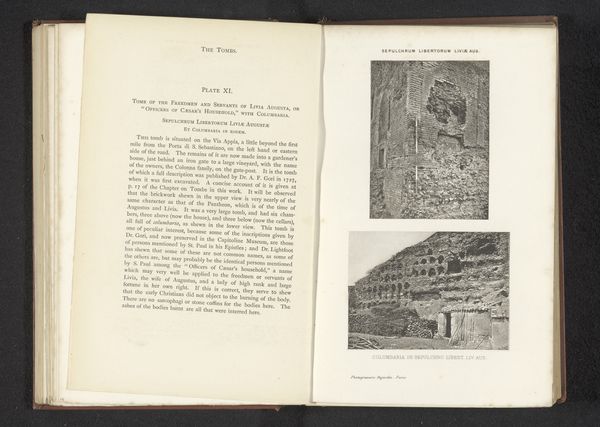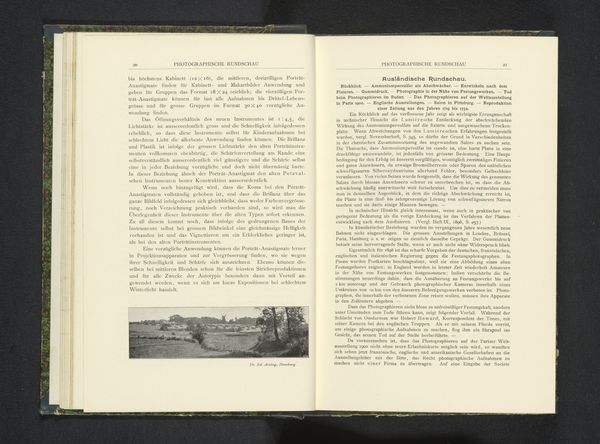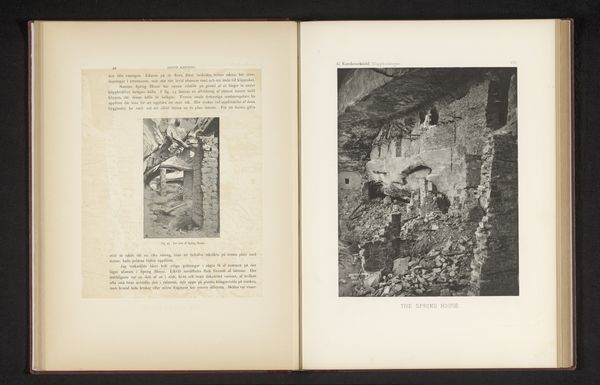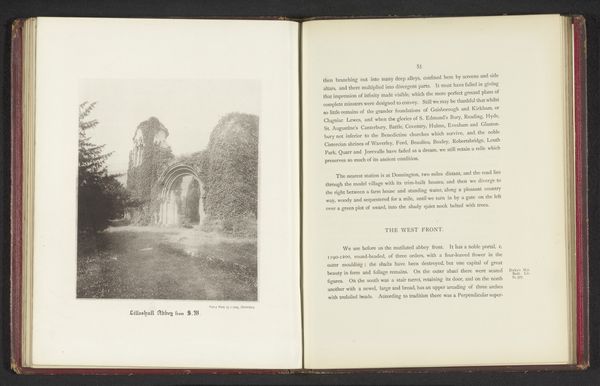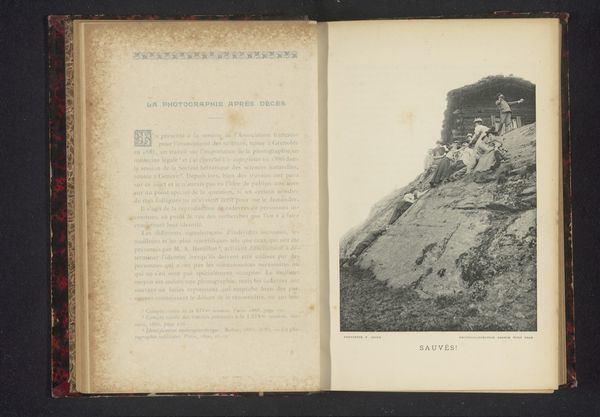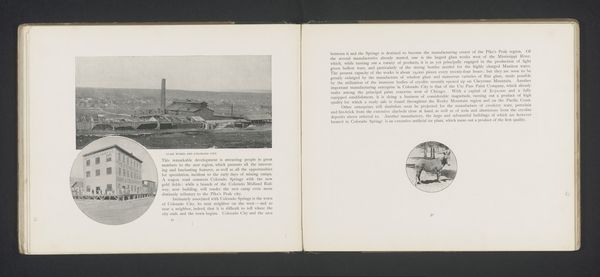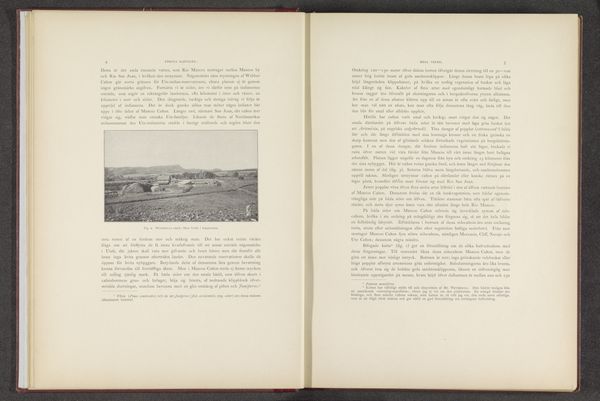
print, photography
# print
#
book
#
landscape
#
photography
Dimensions: height 80 mm, width 105 mm
Copyright: Rijks Museum: Open Domain
Editor: So, here we have a print titled "Gezicht op een steengroeve," which translates to "View of a Quarry," dating from before 1893. The artist is fils Hanrez. It looks like it's printed in a book or journal of some kind and is based on photography. The scene is almost abstract, reduced to forms and lines. I am drawn to its rough edges. How do you interpret this work? Curator: I see more than just an image of a quarry, though. The rough, almost primitive depiction speaks to the intense labour involved in extracting stone. The light and shadow aren't just descriptive, they’re symbolic. Consider what a quarry signifies - a site of extraction, of transforming the natural world. Do you notice any repetitive patterns in the image? Editor: Now that you mention it, yes, I see the stacked stones, those recurring geometric shapes of what has been cut. It almost seems as if the image becomes about geometry and hard work. Curator: Exactly! The hard angles, contrasting lights, all suggest something timeless but brutal. These sites exist to build our structures, our world. Do you recognize any similarity to other monuments from the same era? Think ancient Egypt or Mesopotamian architecture. Editor: I see the connection you're making – pyramids, maybe. Though I am still stuck on the labor required. It does remind us that our present is always built on a transformed past. Curator: Indeed! These images also contain encoded ideals around progress and labour that circulated at the time. A blend of aesthetic and social ideals co-mingling and solidifying with stone and steel. Thank you, this has shifted my understanding as well!
Comments
No comments
Be the first to comment and join the conversation on the ultimate creative platform.
